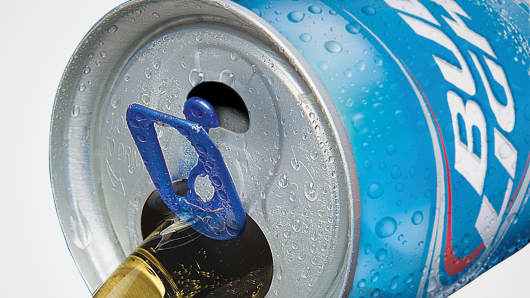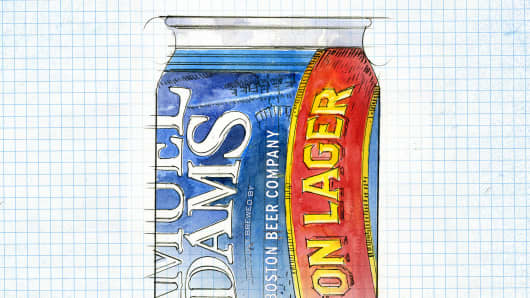The newest weapon in the battle for the beer drinkers' dollar is actually an old one. The once-maligned can is now taking the spotlight—and shelf space—from the bottle.
The can is becoming an increasing popular option for brewers looking to give consumers another reason to choose their product over another. Canned beer made up 53 percent of the market last year, versus 48 percent in 2006, according to industry trade group The Beer Institute.
The latest salvo in the can wars comes from Anheuser-Busch InBev's Bud Light brand, the best-selling beer in the U.S., which recently named Louisville, Ky., as the pilot market for a new 12-ounce Bud Light Vented Can.
The Bud Light Vented Can allows consumers to push down the tab in reverse motion after the can is opened, creating a vent to improve airflow when pouring or drinking the beer.
It's not the first time a brewer has hailed a vented can as a better beer drinking experience.






